Environment Justice Matters Vol. 4 Issue 10

ESG Featured
Understanding Kurdistan: Alternate Narratives by Nilüfer Koç and Neena Gopal

In the center of wars in the Middle East, the Kurds are fighting in Kurdistan for a new paradigm based on ecology, women’s freedom and radical democracy, a model they call Democratic Confederalism. To understand this new paradigm, Bangalore International Centre (BIC) & ESG organised a talk on 16th July, 2023 by Nilüfer Koç and Neena Gopal on Understanding Kurdistan. Watch the discussion here and read the report of the same here.
ESG x University of Washington (Seattle)
On 31st July and 1st August, 2023, a diverse group of students from the University of Washington (Seattle) visited Environment Support Group as part of their experiential learning programme coordinated by Prof. Anu Taranath of the University’s English Department.
Day 1 of the program had Leo F Saldanha & Bhargavi S Rao take students through ESG’s work on various environmental and social justice concerns, as well as the story of Bengaluru’s growth. Day 2 was held at the beautiful United Theological College, Bengaluru campus, where students reflected on how they perceived India and the world through their varied experiences.

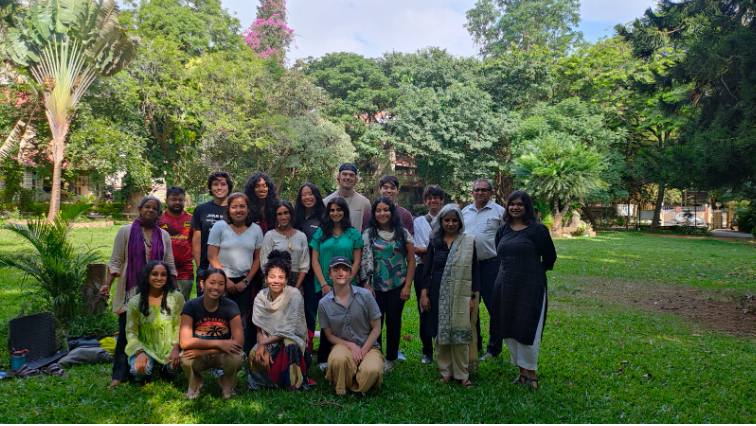
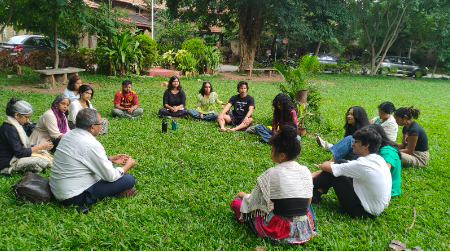

Karnataka’s Weavers thank Chief Minister Siddaramaiah for unprecedented Budgetary boost to the Handloom Sector
On 26th June 2023, All India Federation of Handloom Organisations, of which ESG is a partner, had submitted a letter to the Hon’ble Chief Minister suggesting the setting up of the ‘Mahatma Gandhi Vastrodyama’ to liaison between the market and producer organisations as a key intervention to revive the Handloom Sector, which has been flagging for attention for decades. The letter was signed by several eminent personalities from various sectors.
In an unprecedented step, Hon’ble Chief Minister of Karnataka Shri. Siddaramaiah has recognised the potential of the handloom sector to create green livelihood opportunities for thousands, and made exemplary provisions in the Karnataka Budget 2023-24 that he presented on 7th July 2023. Read more here. Also see “Silver Lining to Distress’ by Bhargavi Rao published in News Click.

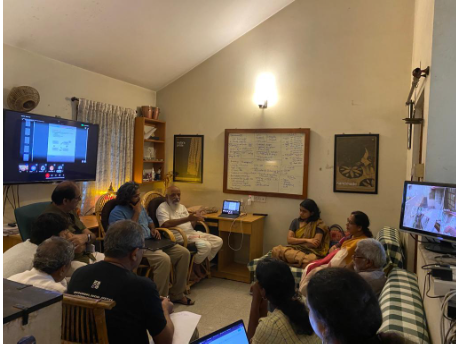
In order to operationalise the provisions included in the budget, the All-India Federation of Handloom Organisations conducted a meeting at Environment Support Group on 26th July, 2023. Read the report of the meeting here.
Upcoming Events

Celebrating National Handloom Day: Weaving Threads of Tradition and Empowerment
National Handloom Day, celebrated on 6th August, 2023, is a time to honor the weavers who work tirelessly to create masterpieces that are not just fabrics but embodiments of our heritage and identity.
Ragi Kana is celebrating National Handloom Day on Sunday by organising a Symposium on ways and means of reviving the Handloom. Experts, activists, designers, and other practitioners will participate and deliberate on various critical areas related to life and livelihood of the handloom weaver community. Besides, roles and responsibilities of consumers will be discussed. Do participate in this crucial event.
Destruction of India’s Forests and Biodiversity
The controversial Biological Diversity (Amendment) Bill, 2021 and the Forest Conservation (Amendment) Bill, 2023 were passed by the Lok Sabha on 25th and 26th July 2023 respectively, and that despite concerns raised by the public on India’s biodiversity and socio economic security. The FCA Bill was in fact passed in complete violation of the rule of law and procedure by failing to consult the Ministry of Tribal Affairs while drafting the Bill, and thus it completely neglects the rights of forest tribes and dwellers. This violation of law is evidenced by responses given to questions posed by Member of Parliament (Rajya Sabha) Sri Aneel Prasad Hegde in the Rajya Sabha from Ministry of Tribal Affairs and Ministry of Environment and Forests. and L. Read details in ESG’s press releases here and here. Both Bills were earlier irregularly referred to a Joint Parliamentary Committee (JPC), instead of the Standing Committee on Science and Technology, Environment, Forests and Climate Change.
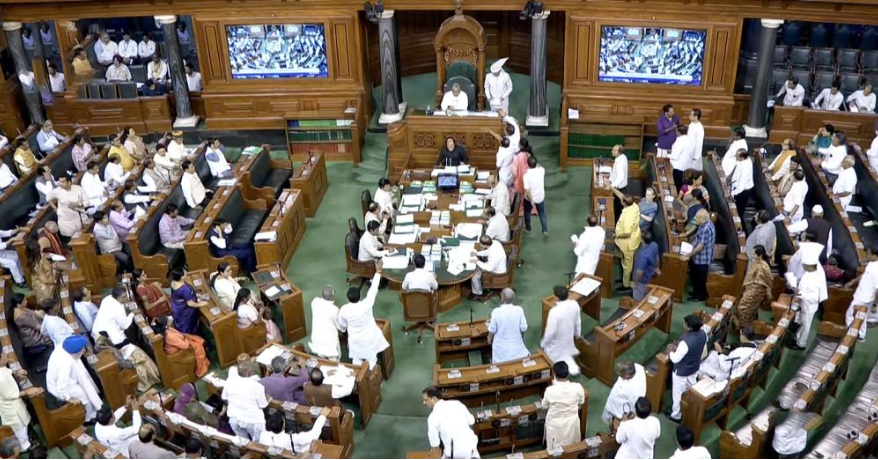
The Coalition for Environmental Justice in India appeal to members of the Rajya Sabha to reject the Bills, highlighting how the FCA Bill would result in easing forest diversion for extractive development; commercialise, commodify and privatise forests; extinguish community rights and control over forests; and deny fundamental rights of all communities within 100 kilometres of India’s borders. Further, the BDA Bill would advance biopiracy, bio loot and bio extraction, and contribute to rapid and irreversible loss of biodiversity and associated traditional knowledge and rights. The appeal was endorsed by over 1900 individuals and organisations.
Yet, in a shocking turn of events, the Rajya Sabha passed the controversial Biological Diversity (Amendment) Bill, 2021 on 1st August, 2023. The move has been criticised by Member of Parliament (Rajya Sabha) Sri Jairam Ramesh, who released a statement on the retrograde implications of the changes made to the Biodiversity Act and Forest Conservation Act.
Ironically, while the Biodiversity Bill passed decriminalised violations including that of biopiracy, the Rajya Sabha, at the same time, passed a bill amending the Cinematograph Act, 1952 to curb piracy of films by criminalising acts of piracy and imposing a fine up to 5% of the film production cost!
Biodiversity Governance
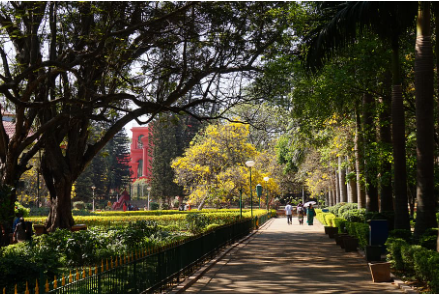
Rich biodiversity is a key fighter against climate change, and can have a significant impact in ameliorating pollution in urban spaces. A recent study of various trees in different parts of Bangalore shows that native trees such as Peepal, Ashoka, Indian beech, jackfruit, and strawberry trees are most tolerant to pollution and help clean up the air most efficiently due to their high tolerance to air pollution.

Creation of wildlife sanctuaries and national parks has been resorted to for conservation of biodiversity. However, several factors need to be addressed for a successful conservation project. For instance, in Uttar Pradesh, despite the construction of the Hastinapur Wildlife Sanctuary, there has been a decline in the Swamp Deer (UP’s State animal) due to insufficient resources, staff & funding, encroachments, and majorly the lack of a proper conservation plan. Similarly, in Bhitarkanika National Park, Odisha, India’s saltwater crocodile conservation programme has increased the population of saltwater crocodiles beyond the carrying capacity of the National Park causing human-animal conflicts.

One of the efficient and effective systems for conservation of biodiversity is through decentralised biodiversity governance where local bodies and local communities play a crucial role. For instance, in the Western Ghats, a community initiative involving the Kadar Tribe community has, over 2 decades, improved the population of hornbills.
Bangladesh is reviving 39 native freshwater fish species through hatchery breeding, in an effort to secure stocks of commercially important fish. It is reported that in Bangladesh, a quarter of the freshwater fish found are threatened with extinction largely as a result of habitat loss, overfishing and pollution.
Madhav Gadgil, environmentalist, ecologist & anthropologist, is set to release his memoir, ‘A Walk up the Hill’, in August, which recognizes the significance of preserving India’s ecological heritage and fostering a harmonious coexistence between humans and the natural world. Madhav Gadgil was chairman of a commission, formally known as Western Ghats Ecology Expert Panel (WGEEP), which presented a report on the conservation of the Western Ghats.
A landslide in Maharashtra’s Raigad district in early July that claimed 27 lives has brought back into focus the importance of Gadgil report. Interestingly, as per the 2021 report by the Landslide Study Committee, the causes of disasters in the Western Ghats and coastal regions is attributed to unscientific construction-oriented development.
International Efforts to Conserve Biodiversity
While India is neglecting its rich biodiversity, there are global efforts against biopiracy. The International Planning Committee on Food Sovereignty’s (IPC) Working Group on Agrobiodiversity participated in Open-Ended Working Group negotiations aimed at defending peasants’ rights to seeds and genetic resources, against the biopiracy of the seed industry supported by rich countries.
The Intergovernmental Conference on Marine Biodiversity of Areas Beyond National Jurisdiction resumed its fifth Session on 19th – 20th June 2023, wherein the Conference adopted the Agreement under the United Nations Convention on the Law of the Sea on the conservation and sustainable use of marine biological diversity of areas beyond national jurisdiction.
Plastic Pollution
A report published in Environmental Advances shows that about 90% of the frogs sampled from the Bengal delta in Bangladesh had microplastics, which can affect the food web and ultimately the health of the ecosystem. Microplastics not only leach chemicals but also attract persistent bioaccumulative and toxic substances (PBTs) which are a hodgepodge of harmful compounds.
Recycling plastics is not the most efficient way to handle plastic waste since plastics need to be decontaminated through water before they can be recycled. The process of decontamination itself is not efficient, uses thousands of litres of water, and generates effluents and various types of waste, with high environmental risk.
Of 3100 beaches tested in the USA in 2022, 55% of them had at least one day where faecal contamination reached levels beyond the Environmental Protection Agency’s benchmarks. Human and animal excreta that pollute the beaches are getting dumped into the ocean from sewage overflows, factory farms and industrial livestock operations.
The Environmental Protection Agency, USA, has recognised PFAs (forever chemicals) as an urgent public health and environmental issue and has established national drinking water standards for six PFAs. Various companies in the USA who are facing lawsuits in relation to PFA contamination are now announcing settlements.
Data from a research paper published in Science Advances reveals that most of the plastic waste in the ocean comes from the litter in parks, beaches, or along the storm drains lining our streets. It further shows that countries with a smaller geographical area, longer coastlines, high rainfall, and poor waste management systems are more likely to wash plastics into the sea. The data also highlights the top countries emitting plastic pollutants in the waters are Phillipines, India and Malaysia.

In an effort to tackle plastic production and waste, ESG has invited the attention of the High Court of Karnataka in its PIL on waste management and governance which has been the basis for various path breaking orders and also law reforms. Read the affidavit here.
Managing Waste in Landfills?

In Chandigarh, over 300 mt of waste is being dumped daily at Dadumajra, creating a mountain of garbage which threatens over 50,000 lives. Not only has INR 100 crores already been spent on clearing previous two dumps, but INR 2.5 crores is being spent annually just to spray and maintain the existing waste pile. In Kolkata, the Dhapa landfill has been growing since 1987! As per orders of the National Green Tribunal, it is to be cleared by June 2024 by biomining and bioremediation. Though the project began in 2019, as of February 2023, only 0.78 mt of the 4 mt of legacy waste has been processed.
In Bengaluru, the Deputy Chief Minister inspected three waste processing plants in the city and proposes to reactivate them. As per Karnataka State’s Budget for 2023-24, the BWSSB is to upgrade 20 STPs by March, 2026 at a cost of Rs.1,411 crore.
Treading Polluted Waters of Bengaluru

In Bengaluru, 120 people in an apartment fell ill due to contaminated water from sewage seepage in the borewell supply. It is reported that sewage contributes to 70 per cent of the pollution load to the water bodies in Bengaluru. To make matters worse, there is rampant dumping of waste, including animal carcasses, into lakes and water bodies, especially in Bengaluru.
It is reported that BWSSB has received financial assistance of INR 3000 crores from the World Bank out of which INR 1000 crores is allocated to set up sewage treatment plants in lake beds, and the remaining INR 2000 crores is allocated for strengthening the storm water drains and rejuvenating the lakes.
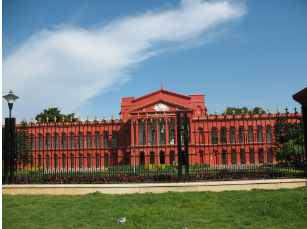
To concrete line canals would be in violation of the directions of the Karnataka High Court in the Lakes PIL, in particular the recommendations of Environmental Management Policy Research Institute and Justice N K Patil Committee. In a decision that draws together decades of efforts to protect lakes and raja kaluves (canals) of Bangalore from widespread encroachment and pollution, the Karnataka High Court, on 1st August, 2023, directed the BBMP and various other agencies involved in maintenance and upkeep of these water commons to come up with an action plan to fix the prevailing mess in a month.
The Court held: “Now enough material is available with the respondents and stakeholders and the need of the hour is now a progression from suggestions to an action.” In the previous hearing the Court’s attention was invited to the fact that there were multiple reports and various judicial directives requiring agencies to ensure all lakes and raja kaluves must be protected and revived as functional aquatic ecosystems.
BBMP’s solid waste management department now seems to be partaking in rejuvenation work despite the BBMP having a Lakes Department for the very purpose. It is reported that funds running into more than Rs 50 crore that was released for setting up leachate processing units were diverted for rejuvenation of 2 lakes. Further, the ongoing rejuvenation work is so ill thought that it is practically killing the lakes.
Karnataka’s Water Crisis
16 districts in the State are facing a drinking water problem causing the government to instruct officials to prepare a contingency plan and brace for a “drought-like” situation. Further, 6 out of these 16 districts are even facing a big drop in groundwater. Even districts which see an increase in rainfall are facing a water crisis due to deforestation, concretisation, over-exploitation of groundwater for agriculture and poor rainwater harvesting systems.
Could more projects like the The Koramangala-Challaghatta (KC) Valley project that treats 440 million litres wastewater recharge groundwater levels? A study by Institute of Social and Economic Change (ISEC) concluded that while Karnataka’s initiative to refil 533 tanks has brought benefits to farmers, some farmers have unfortunately switched to water-intensive cash crops from food crops. Though, downstream farmers are unhappy that untreated sewage is entering their lakes and have threatened to protest.
In Bengaluru, the revival of the raja kaluve network and dead lakes in the city is advocated to resolve the city’s drinking water problem, instead of moving ahead with the Mekedatu Reservoir Project.
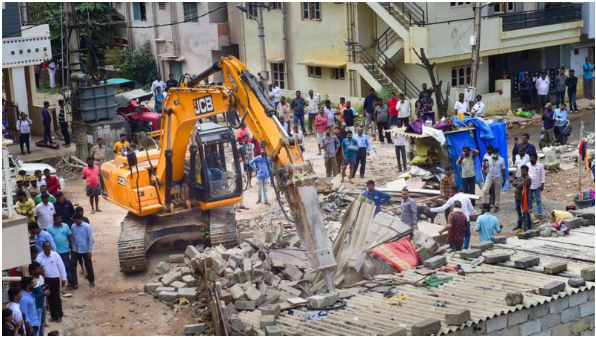
Floods in Bengaluru have time and again revealed the necessity to remove encroachments in raja kaluves and lakes. Between 2018 and 2021, Karnataka experienced significant human and financial losses due to floods. The BBMP has undertaken to demolish 110 buildings which are allegedly encroachments over the month in Mahadevapura and KR Puram after already completing the demolition of 25 properties in the same area. They have further stopped issuing approvals for building plans from 5th June, 2023 to see if any town planning rules have been violated.
The issue on encroachment of water commons is widespread with the Gauhati High Court emphasising the need to protect the rights of the lake as a living body and questioning whether anyone has the right to encroach on a water body and demand notice before eviction.
Stifling Democracy

In stark opposition to the principles of democracy, development projects in India seem to be promoted largely without the consultation of the general public. In Bengaluru, residents of the IISC Campus are protesting against the increased felling of trees for the expansion of the campus which is itself a biodiversity hotspot. They state that the expansions are undemocratic as few officials made the decisions with no consultation with the residents.
Even the right to protest is being stifled with the Bengaluru Police Commissioner issuing an order restricting protests to Freedom Park. Read more here. An online petition was initiated to safeguard the right to protest. Read and sign the petition here.
On 28th June, 2023, a confederation, named Horatada Hakkigaagi Janandolana, formed a human chain at the Majestic Bus stand, demanding the withdrawal of the order. Similar curbing of the right to protest can be seen in Delhi, Mumbai and Jaipur.
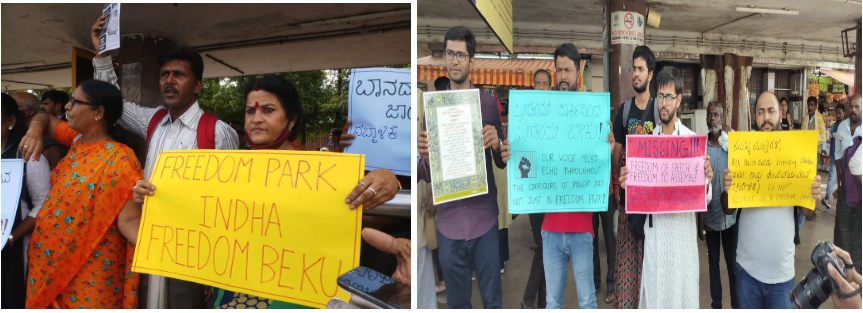
Yet another blow to deep democratization in the city has been the formation of an elite task-force by the Deputy Chief Minister of Karnataka for imagining the future of Bengaluru. The move has been criticised not only by ESG but various other NGOs, civil society groups and individuals. Read their opinions here.
ESG has initiated a campaign to ensure the formation of a constitutionally mandated democratic processes to reimagine and institute governance, administration and people friendly processes to ensure inclusive development of Bengaluru metropolitan area. Read and sign the petition here.
As was to be expected, industrial captains have suggested construction of the world’s longest underground tunnel highway network across the city, which experts opine will not ease the traffic woes.
The first step towards securing democratic decision making, is the strict implementation of the Constitutional 74th Amendment (Nagarpalika) Act, 1992, and the formation of the Metropolitan Planning Committee (MPC). The Karnataka High Court has also issued notice is a petition against the unplanned growth of the city and the government’s failure in constitution the MPC.
Infrastructure and the Environment
In Brazil, soccer star Neymar was fined 16 million reais ($3.33 million) for breaching environmental rules during the construction of his coastal mansion as the project violated rules regarding the use and movement of freshwater sources, rock and sand.
In a rush for development and growth, the environment has always been compromised. In Europe, Seine-Nord Europe Canal project envisages construction of a 107 km long canal that connects the Oise River and the Dunkirk-Escaut Canal to create a network of waterways for freight transportation between Paris, Belgium, the Netherlands and Luxembourg. The project involves cutting through wetlands, agricultural lands and even the diversion of the Oise River!

In Maharashtra, it is reported that the government has violated rules pertaining to the conservation of coastal ecology for a beach beautification project in Malad. The project involved construction of a 600m long sea wall along the Aksa Beach where no construction is permissible as it is an ecologically sensitive area. Further, a 720 km long Pune-Bengaluru Expressway is proposed to be constructed which envisages the felling of over 25,000 trees and which will affect about 444 water bodies in Karnataka. The project also required large expanses of productive grasslands which the NHAI has termed as barren land.
In a conference, India’s Union Environment Minister states that the average time to accord environmental clearances to industrial projects had come down to below 75 days from 600 days (in 2014) and that this is a “matter of pride”. With what seems to be a lax system of granting environmental clearances, industries are found to be taking the process for granted. Recently, Winstron, an iPhone manufacturer, was fined 1.6 crores as they expanded their industry and then sought retrospective environmental clearance.
Mineral Rush
Tamil Nadu is seeking to be the EV capital of the world and has wooed investments worth ₹2.6 lakh crore by signing 227 MoUs since May 2021. Out of the total MoUs signed, 80% of the MoUs have either confirmed their investment or have started work in the state. Such aspirations and large investments are not uncommon with the world transitioning away from fossil fuels, leading to a rush for minerals that drive clean energy.
The Indian government unveiled a list of 30 minerals critical for clean energy initiatives which include nickel, titanium, vanadium, and tungsten. Earlier this year, lithium reserves were found in Jammu & Kashmir.

India has also approved the amendment in the Mines and Minerals (Development and Regulation) Act, lifted the ban on mining lithium and five other minerals and allowed private companies to mine the six minerals. The government intends to introduce a policy framework covering exploration, processing, utilisation, and recycling of critical minerals. India also recently joined the Minerals Security Partnership (MSP), an initiative led by the United States to establish robust supply chains for critical energy minerals.
Similarly, Norway’s government intends to open up the country’s waters to deep sea mining as the Norwegian seabed is reportedly rich with minerals including copper, zinc, manganese and cobalt. The move has been severely condemned by environmentalists.

Renewable Energy Goals
India’s annual operational solar power capacity is 67 GW, with 96 GW under implementation, and a target of 292 GW set for 2030. In wind energy, 43 GW is operational, with 14 GW under pipeline, and a target of 100 GW by 2030. To help achieve this target, the Union Government has asked all States and UTs to prepare a renewable energy plan, with a focus on land acquisition.
Solar Energy Corporation of India (SECI) has invited bids to appoint an agency for conducting soil investigation at proposed renewable energy project sites in Leh, Ladakh, with a total capacity of 13 GW. SECI has also issued a tender seeking agencies for conducting a Geo-Technical Study and Topography Survey at the Mithakari site in South Andaman.

In Karnataka, the Karnataka Renewable Energy Development Limited (KREDL) has reported a turnover of ₹88.49 crore with a net profit of ₹39.12 crore and declared its highest-ever dividend, amounting to ₹20.96 crore for the Financial Year 2021-22. However, those in the State who have installed solar panels under the rooftop solar programmes implemented in 2015 are facing power losses and several problems due to rigid policy guidelines, frequent grid power interruptions and maintenance issues.
In Jaisalmer, ‘clean’ energy (RE) companies are wreaking havoc on arid ecologies and livelihoods by taking over sacred groves (classified as wastelands in govt. records). The Supreme Court in 2018 granted protection to these areas, but RE companies continue to take more land, uproot ancient trees, and erect more high-tension wires.
Green Hydrogen
India has wholly embraced green hydrogen with the Union Ministry of New and Renewable Energy having released a draft roadmap for research and development of green hydrogen manufacturing and storage. Maharashtra’s State Cabinet has also approved the state’s Green Hydrogen Policy to promote renewable energy and green hydrogen projects, making it the first state to do so. The state cabinet also approved INR 8,562 crore for implementation of this policy.
Furthermore, the union government hosted the International Conference on Green Hydrogen (ICGH-2023) in New Delhi from 5-7 July, 2023 to bring together global scientific, policy, academic and industrial leaders to discuss recent advances and emerging technologies in the entire green hydrogen value chain. Think20, an official Engagement Group of the G20, constituted a task force on ‘Refuelling Growth: Clean Energy and Green Transitions’ which has released a policy brief on ‘Governing a Future Hydrogen-based Society’ making several recommendations to the G20.
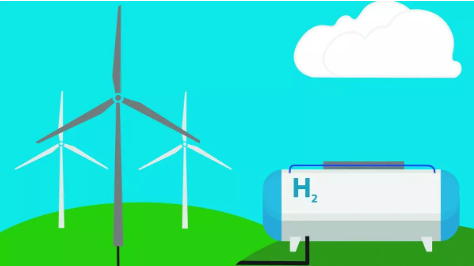
It is also reported that India has discussed a possible deal to supply more than 11 mmt a year of green hydrogen to the European Union and Singapore, who in turn would invest in Indian clean energy projects.
With such rapid promotion of green hydrogen as an alternative to fossil fuels, one must bear in mind the challenges that come with it. Green Hydrogen involves high costs, low efficiency, pressure on drinking water, low supply chain efficiency and high safety concerns, all of which makes it unviable for India. One of the major disadvantages of green hydrogen is the high dependency on freshwater. However, researchers at IIT-Madras have created alkaline water electrolysis to produce green hydrogen from seawater, thereby reducing pressure on freshwater.
Extreme Climate Impacts

Millions of people in Texas in the United States are currently enduring extreme temperatures following a tornado that tragically took three lives. The worst wildfire in Canada’s history has led to the displacement of tens of thousands of indigenous people. The scorching heat, reaching nearly 43°C, is expected to persist in the region.
As climate-related disasters become more frequent, the World Meteorological Organization (WMO) has called on all countries to establish early warning systems by 2027. A recent study highlights the crucial role of social connectedness in disaster resilience, with socially-connected villagers faring better in the aftermath of climate-related events.
Meanwhile, scientists have found that the Earth’s tilt has shockingly been altered due to over extraction of groundwater as well as due to accelerated melting of the polar ice sheets and mountain glaciers, which has changed the way mass was distributed around the planet – enough to influence its spin! Between 1960 and 2000, worldwide groundwater depletion more than doubled, to about 75 trillion gallons a year, scientists estimate. Since then, satellites that measure variations in Earth’s gravity have revealed the staggering extent to which groundwater supplies have declined in particular regions, including India and the Central Valley of California.
Extreme Floods across India
Various parts of India are grappling with lashing rain and floods that continue to threaten the homes and lives of thousands. Monsoon rainfall across Northern India has been about 60% higher than the season average in the region. Himachal Pradesh, the IMD reports, has experienced more than 29 flash flood events since monsoon hit the state on 24th June, with more than 50% of the floods occurring in the past week. The raging rain, flash floods, and the resulting landslides have caused 91 reported fatalities in the state as various relief efforts continue across the state.
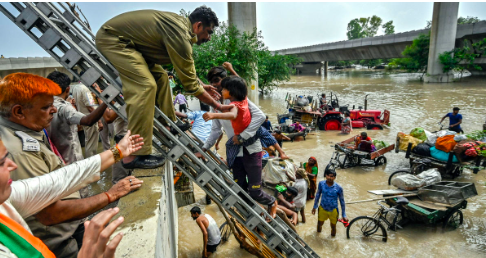
A rise in the level of the Brahmaputra river in Assam, due to incessant rains, also led to floods in Chirang and Bongaigaon districts . Record-breaking rains in New Delhi resulted in city-wide floods forcing roads, schools, and offices shut, the Yamuna breaking its banks and inundating surrounding areas , and the city experiencing possible water shortages of up to 25%. Punjab and Haryana, too, battle heavy rains, with the states’ combined death toll reaching 18.
The interaction between a western disturbance and the monsoons is one among the many reasons for the devastating monsoon rains and floods given by the director general of the IMD. Global warming has exacerbated the effects of this interaction, claim some experts. Unregulated construction, various hydel projects, and sand mining along riverbanks and beds are believed to have contributed to, or even furthered the severity of the calamitous floods and landslides in Himachal Pradesh.
Sustainable Food Consumption
The upcoming COP28 in the UAE will place a strong emphasis on sustainable food consumption, recognizing the significant emissions associated with the food industry. Climate-smart technologies, reducing food waste, diversifying production, and protecting livestock are key strategies proposed to mitigate emissions.
Meanwhile, the approval of lab-grown meat by regulatory authorities such as the US FDA and the US Department of Agriculture, signals a new development in the food industry. While initial studies suggest higher greenhouse gas emissions in lab-grown meat production stages compared to traditional meat, it is argued that this technology represents a step towards growing alternative protein sources and potentially reducing the environmental impact of livestock farming. But will it benefit corporations even more?

It is reported that over 70% of soil in India suffers from soil acidity or alkalinity, and almost a third of the country’s geographical area is close to land degradation caused because several plant nutrients have turned malnutritious. In a move towards natural farming and organic farming, India is adopting alternate fertilisers to chemical fertilisers and is now replacing urea with need-coated urea, sulphur-coated urea, and nano urea. Why then is agroecology not encouraged, especially when it does not need any of these capital intensive inputs?
It is not only the soil that needs to be conserved but also the seeds and biological data. Biobanks, which store human-based biodata for R&D of critical human diseases, may actually pose the risk of biopiracy and failure in benefit sharing if there is no robust regulatory system, as most biobanks are in the Global North and cater to the R&D that benefits them and ignores the Global South for lack of representation.
The Delhi High Court has rejected PepsiCo Inc’s appeal against an order of the Protection of Plant Varieties and Farmers’ Rights Authority which revoked the intellectual protection granted to a potato variety grown exclusively for the company’s popular Lay’s potato chips. The grounds for doing so was that India’s rules do not allow a patent on seed varieties.
Challenges in Climate Action and Environmental Awareness
Despite an increase in the number of publicly listed corporations pledging to achieve net-zero emissions, concerns have emerged regarding misleading climate claims and insufficient credible plans. Some companies have employed creative accounting practices to exclude certain emissions, undermining the transparency of their commitments.
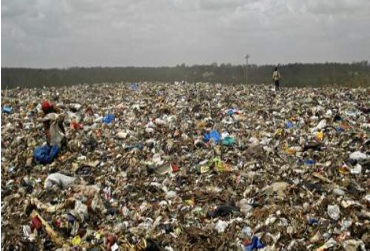
To address this, the UN has called for countries to expedite their net-zero plans by a decade, recognizing that current infrastructure is incompatible with the 1.5°C temperature target. In the United States, a petition highlights the inadequacy of current EPA standards for reducing methane emissions, particularly from landfills, which rank as the third-largest methane source in the country. (ESG has been a part of various efforts to prevent the devastations that landfills bring.)
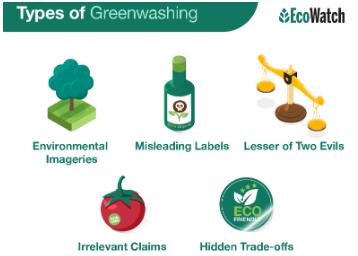
Furthermore, environmental awareness is growing among younger generations in Australia, with a significant majority expressing concerns about the exploitation of nature for human benefit. The Australian Competition and Consumer Commission is also investigating businesses for greenwashing, reflecting the increased scrutiny placed on environmental claims.
The Maastricht Principles on the Human Rights of Future Generations was officially launched on July 13, 2023, to clarify that human rights, including the right to a clean, healthy, and sustainable environment, do not have temporal limitations and that human rights apply fully to future generations.
US-India Strengthen Defence Ties to Counter China’s Influence
During Prime Minister Narendra Modi’s recent visit to Washington, defence ties, technology partnerships, and India’s role in the Indo-Pacific were prioritised. Several Defence pacts were inked that mark a shift towards technology transfer and co-development. The US Navy has secured agreements with Indian shipyards, allowing mid-voyage US Navy ships to undergo service and repair in India, enhancing cooperation and information sharing. Modi proposed moving away from the old buyer-seller relationship to a relationship involving the transfer of technology, co-development, and co-production.
In addition to defence and technology cooperation, significant announcements have been made in renewable energy, space exploration, and investment in manufacturing facilities. The Biden administration has pledged support for India’s goals of increasing electric vehicle production and achieving 500 gigawatts of renewable energy installation. Beyond these pacts, no time-lines or concrete steps to achieve them have been outlined.
While human rights groups criticise the US-India relationship for undermining the Biden administration’s human rights and democracy agenda, analysts believe that as long as both countries share concerns over China’s assertiveness, the US-India relationship will continue to thrive.

Ethnolinguistic Clashes in Manipur

Manipur, governed by the Bharatiya Janata Party (BJP), faces criticism as a retired lieutenant general compares the state’s situation to political anarchy in countries like Syria. Several other veterans too, urged the central government to intervene and restore peace.
Ethnic clashes between the Meitei and Kuki communities erupted in Manipur following protests against the Meitei community’s demand for Scheduled Tribe (ST) status, resulting in over 100 deaths during the now three months-long unrest. To control the spread of rumours, curfews and internet bans have been imposed in 11 districts.
The state’s labelling of the Kuki-Zomi community as “encroachers” without adhering to proper procedures has led to structural violence against them. Using the concept of “protected forest,” previously excluded areas were included, prompting nighttime evacuations of these communities.
[This volume of Environment Justice Matters has been compiled by Nidhi Hanji, Dewansh Matharoo, Sachin P S and Yashaswini Sundar.]
Environment Support Group (Trust)
1572, 36th Cross, Ring Road, Banashankari II Stage
Bangalore 560070. INDIA
Tel: 91-80-26713560 | Voice/Fax: 91-80-26713316
Website: esgindia.org Email: [email protected]
Follow our Facebook, Instagram, Linkedin and Twitter page
- ESG is registered to secure support under the Corporate Social Responsibility (CSR) scheme of the Ministry of Corporate Affairs. Reg No. – CSR00017320
- Environment Support Group (ESG) is eligible to receive foreign donations/grants per the Foreign Contribution Regulation Act (FCRA)
- All donations to ESG from Indians are eligible for tax exemptions as per Sec. 80G of the Income Tax Act.
More details about ESG’s Financial Reports and Statutory Approvals are accessible here: https://esgindia.org/new/financials-and-statutory-clearances/
Your Monetary Contributions Keep Us Working

Donate via UPI (This QR Code is applicable ONLY to Indian/Domestic donors. Post UPI payment, please share donation details to [email protected] along with PAN – statutory requirement)

